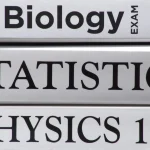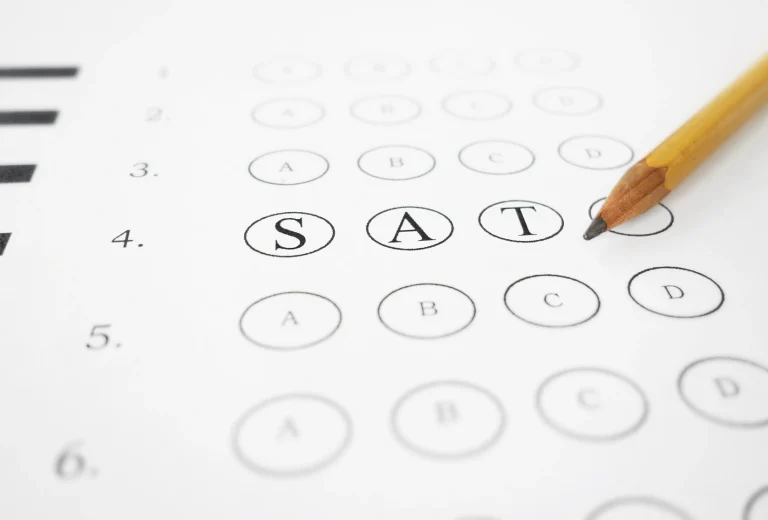While the full 2025 score breakdown hasn’t been released yet, we can look to 2024 for insight into their popularity:
- AP U.S. History: Nearly 490,000 students took the exam (making it the second most popular AP exam overall)
- AP World History: Nearly 380,000 test-takers
- AP European History: Around 90,000 students
Despite their popularity, these exams are known for being tough to score highly on. In 2024, all three had relatively low percentages of students earning a 5:
- AP European History: 13% (among the seven lowest 5-rate subjects)
- AP U.S. History: 14% (among the ten lowest 5-rate subjects)
- AP World History: 14% (among the ten lowest 5-rate subjects)
So, how should students approach these courses? They’re academically valuable and well-regarded, yet they’re also challenging and require strong reading, analytical, and writing skills.
In this guide, Aralia breaks down everything you need to know about AP history subjects, covering:
- A course content overview for each AP history exam
- A look at score trends and difficulty over the past five years
- Course selection tips based on your goals and strengths
AP History Course Content Overview
1. AP United States History (APUSH)
The AP United States History (APUSH) course covers the history of the United States from around 1491 to the present, including major topics such as the colonial period, the American Revolution, the War of Independence, and the Civil War.
Students are expected to understand the basic timeline and key events of U.S. history, along with their historical context and significance. Additionally, the course explores American political and social systems, cultural diversity, and social conflicts throughout U.S. history, as well as the nation’s economic systems and policies.
The College Board outlines the course through nine periods, each focusing on a specific era:
| Period | Content |
| 1491–1607 | Study Native American societies and the reasons behind European exploration and colonization of the Americas. |
| 1607–1754 | Learn about Spanish, French, Dutch, and British colonies established in the New World. |
| 1754–1800 | Explore the events that led to the American Revolution and the formation of the United States, along with early developments of the republic. |
| 1800–1848 | Examine how the young nation evolved politically, culturally, and economically during this time. |
| 1844–1877 | Understand the nation’s territorial expansion and the events that led to Southern secession and the Civil War. |
| 1865–1898 | Analyze the country’s economic and demographic shifts and how these changes intersect with cultural and political developments. |
| 1890–1945 | Study the changing American society and culture, as well as the causes and consequences of global wars and economic depression. |
| 1945–1980 | Learn about the Cold War rivalry between the U.S. and the Soviet Union, the rise of civil rights movements, and transformations in the economy, culture, and politics. |
| 1980–Present | Explore the rise of political conservatism, advancements in science and technology, and the demographic changes that have significantly shaped recent U.S. culture and politics. |
Do you want to explore AP U.S History course and exam in more detail? Click here to read How to Prepare for the AP US History Exam: APUSH Comprehensive Study Guide.
Ace Your AP Exams with Insider Expertise
2. AP World History
The AP World History: Modern (commonly abbreviated as APWH) covers global history from approximately 1200 CE to the present, focusing on topics such as cross-cultural exchanges, the rise and fall of empires, economic systems, social structures, and technological transformations.
With an emphasis on a global perspective, students are expected to understand major timelines and key events in world history, along with their historical context and significance. The course also includes the study of political and social systems across regions, cultural diversity, social conflicts, and global economic systems and policies.
According to the College Board, the course is divided into nine units:
| Unit | Content |
| The Global Tapestry | Explore how states across different world regions formed, expanded, and declined from approximately c. 1200-c. 1450. |
| Networks of Exchange | Study the political, social, and cultural developments of the period c. 1200-c. 1450. Learn how regions became connected through trade and how those connections impacted people, cultures, and the environment. |
| Land-Based Empires | Focus on the period from c. 1450 to c. 1750 and examine empires that exercised power over vast territories. |
| Transoceanic Interconnections | Understand the advancements in maritime exploration, the emergence of ocean-based empires, and the impact of new cross-cultural interactions. |
| Revolutions | Study the period from approximately c. 1750 to c. 1900, exploring how new political ideas and technological developments led to sweeping governmental, societal, and economic changes. |
| Consequences of Industrialization | Continue exploring c. 1750 to c. 1900 by examining how different nations acquired and expanded control over colonies and territories during the industrial era. |
| Global Conflict | Examine the 20th century to the present, focusing on the major global conflicts that shaped the modern era. |
| Cold War and Decolonization | Study the struggle for independence in former colonies and the global power tensions between capitalism and communism from c. 1900 to the present. |
| Globalization | Analyze the causes and effects of increasing global interconnectedness in the modern era, continuing the study of world history from c. 1900 to today. |
3. AP European History
The AP European History course (commonly referred to as AP Euro) covers the development of European history from 1450 CE to the present, exploring major topics such as the Renaissance, the Reformation, the Industrial Revolution, the two World Wars, the Cold War, and contemporary Europe.
Students are expected to focus on key turning points in European history, understand major timelines and events, and grasp their historical context and significance. Additionally, the course explores European political and social systems, cultural diversity, historical conflicts, and economic systems and policies within the continent.
The College Board divides the course into nine units:
| Unit | Content |
| Renaissance and Exploration | Explore the rapid changes sparked by the Renaissance and trace its legacy through colonialism and the commercial revolution that reshaped European societies. |
| Age of Reformation | Examine the evolution of Christianity in Europe and how the Reformation impacted everyday life and politics. |
| Absolutism and Constitutionalism | Examine the evolution of political power and its impact on the relationships between nations and individuals. You’ll also explore how European economic developments affected society, politics, and culture. |
| Scientific, Philosophical, and Political Developments | Learn how scientific thinking and new political ideologies, combined with technological advancements, transformed much of 18th-century European life. |
| Conflict, Crisis, and Reaction in the Late 18th Century | Understand Britain’s growing influence in European affairs and the widespread impact of the French Revolution. |
| Industrialization and Its Effects | Examine how the Industrial Revolution, technological advancements, and urbanization brought transformative changes to European society and political thought. |
| 19th-Century Perspectives and Political Developments | Explore how nationalism and shifting alliances laid the groundwork for World War I. |
| 20th-Century Global Conflicts | Study the causes, consequences, and dynamics of the two World Wars that reshaped global and European history. |
| Cold War and Contemporary Europe | Learn how competing ideologies and global superpowers defined much of the second half of the 20th century in Europe. |
Reminder: AP U.S. History, AP World History, and AP European History exams all follow a similar format: multiple-choice questions, short-answer questions (SAQs), a Document-Based Question (DBQ), and a Long Essay Question (LEQ). However, each course emphasizes different historical themes and regions, so it’s important to choose based on your academic strengths and personal interests.
Wondering if you should choose AP US History or AP World History? View our in-depth analysis here.
AP History Exam Data and Difficulty Analysis (2021–2025)
1. AP United States History (APUSH)
Score Distribution (2021–2025)
| Year | % Earning Score of 5 | % Earning Score of 4 | % Earning Score of 3 | Test Takers | Average Score |
| 2025 | 14.0% | 36.0% | 23.0% | Not released | Not released |
| 2024 | 12.8% | 33.3% | 26.0% | 488,688 | 3.23 |
| 2023 | 10.6% | 14.8% | 22.1% | 467,975 | 2.54 |
| 2022 | 10.8% | 15.6% | 21.9% | 456,520 | 2.57 |
| 2021 | 10.1% | 15.9% | 21.2% | 399,676 | 2.92 |
Key Observations:
- The number of students taking the exam has grown steadily, from around 400,000 in 2021 to nearly 490,000 in 2024, marking a 20% increase.
- The percentage of students scoring a 4 has seen a significant jump, rising from 15.9% in 2021 to 36% in 2025.
- The percentage of students scoring a 5 has also improved, though more modestly, from 10.1% in 2021 to 14% in 2025.
According to official College Board updates (via Trevor Packer’s social media):
“…this year’s students developed stronger content knowledge and skills than last year’s, raising the percentage of 4s and 5s by 4%.”
2. AP World History (APWH)
Score Distribution (2021–2025)
Year | % Earning Score of 5 | % Earning Score of 4 | % Earning Score of 3 | Test Takers | Average Score |
2025 | 14.0% | 33.0% | 17.0% | Not released | Not released |
2024 | 11.9% | 32.3% | 19.6% | 379,385 | 3.11 |
2023 | 15.3% | 21.9% | 27.4% | 350,353 | 3.04 |
2022 | 13.2% | 21.9% | 27.0% | 314,716 | 2.96 |
2021 | 9.7% | 18.5% | 24.0% | 302,232 | 2.71 |
Key Observations:
- Student participation has steadily increased—from 302,232 in 2021 to nearly 380,000 in 2024.
- The percentage of students scoring a 4 saw a notable rise, improving from 18.5% in 2021 to 33% in 2025.
- The percentage of students scoring a 5 also climbed, from 9.7% in 2021 to 14% in 2025. Interestingly, 2023 recorded the highest 5-score rate in recent years at 15.3%.
3. AP European History (AP Euro)
Score Distribution (2021–2025)
Year | % Earning Score of 5 | % Earning Score of 4 | % Earning Score of 3 | Test Takers | Average Score |
2025 | 13% | 35% | 24% | Not released | Not released |
2024 | 13.1% | 33.3% | 25.2% | 83,266 | 3.23 |
2023 | 12.9% | 21.3% | 25.2% | 81,788 | 2.95 |
2022 | 13.5% | 21.0% | 24.4% | 80,152 | 2.95 |
2021 | 10.6% | 19.4% | 24.7% | 74,202 | 2.82 |
Key Observations:
- Compared to AP U.S. History and AP World History, AP European History remains a more niche course, with the smallest test-taking population of around 80,000 to 83,000 students annually.
- The percentage of students scoring a 4 experienced the most significant increase, jumping from 19.4% to 35% over the five-year period.
- The percentage of students scoring a 5 saw modest growth, rising from 10.6% in 2021 to 13% in 2025.
Enhance Your Historical Research Skills with Aralia’s Research Classes
Difficulty Analysis: Why AP History Exams Are Hard to Ace
Scoring a 4 or 5 on an AP History exam is no easy feat. These exams go well beyond memorizing facts, and many students find them among the most demanding APs. Here are three key reasons why:
1. Writing-Intensive Exam Format
Each AP History exam includes two major essay components: the Document-Based Question (DBQ) and the Long Essay Question (LEQ). These sections don’t just test content knowledge; they assess your ability to craft clear, well-structured, and persuasive historical arguments.
For students who are non-native English speakers, the emphasis on analytical writing in timed conditions can be particularly challenging.
2. Emphasis on Cause-and-Effect and Historical Trends
AP History exams prioritize historical thinking over simple fact recall. You’ll be expected to analyze causes, developments, consequences, and long-term impacts, not just list events or dates.
For instance, it’s not enough to know what the Declaration of Independence is; you need to explain how it fundamentally reshaped American political ideology and influenced future developments.
3. Language Barriers and Cultural Context
AP U.S. History and AP European History demand a solid understanding of Western religion, legal systems, and economic structures.
Students without a strong background in Western philosophy or historical literature may struggle to fully grasp exam prompts and the broader context, especially when unfamiliar with key cultural references.
The Value of AP History Courses and How to Choose the Right One
Taking AP History courses offers several significant benefits:
- Develop Historical Thinking and Gain a Long-Term Perspective: AP History classes help students develop strong skills in analyzing historical trends and understanding the broader context over time. This foundation is especially valuable for students interested in fields like history, law, research, international relations, or public policy.
- Early Exposure to College-Level Writing: The essay components, such as the DBQ and LEQ, mirror college-level academic writing. Gaining experience with these essays in high school provides students with a significant advantage when they start university.
- Demonstrate Academic Depth in College Applications: AP History coursework and scores can highlight a student’s intellectual curiosity, critical thinking skills, and readiness to tackle rigorous academic challenges—qualities highly regarded by college admissions officers.
Recommendations
Student Type | Academic Focus | Recommended Course(s) |
9th graders / Beginners | Build foundational knowledge and historical timelines | AP World History or AP Human Geography |
Students with strong English writing skills | Interested in humanities or social sciences | AP U.S. History + AP World History |
Students interested in Western political thought/philosophy | Interested in history, law, or international relations | AP U.S. History / World History + AP European History |
Students seeking college credit | Any major | AP Human Geography (simpler exam structure) |
Reminder: AP History exams cover a wide range of content and require intensive writing. For most students, it’s best not to take more than one AP History course in the same school year to avoid feeling overwhelmed.
While aiming for a 5 is an excellent goal, remember that the real value of AP History lies in developing a framework to understand the world, express your ideas clearly, and explore deeper questions about cause and effect. These skills will serve you well far beyond the exam room!
Aralia’s 2026 AP Extended Program Is Now Open
With the 2025 AP exams behind us, Aralia Education is officially launching its 2026 preparation program, led by seasoned AP teachers who are also AP Exam Readers. These instructors include:
- AP World History Instructor: AP World History Exam Question Leader & Reader with 21+ years of teaching experience
- AP English Language Instructor: AP English Language Exam Reader with 30+ years of high school teaching experience
- AP Calculus AB Instructor: Former ACT math exam writer, AP Math teacher at a top public high school with 40 years of teaching experience
- AP Chemistry Instructor: AP Chemistry Exam Reader, PhD in Chemical Physics, and has 30+ years of STEM teaching experience at high school and college levels
Whether you’re aiming for a 5 or looking to build confidence in your AP coursework, Aralia’s AP Extended Program gives you the edge you need.
Enroll Now and get ahead on your AP journey!










